Menu
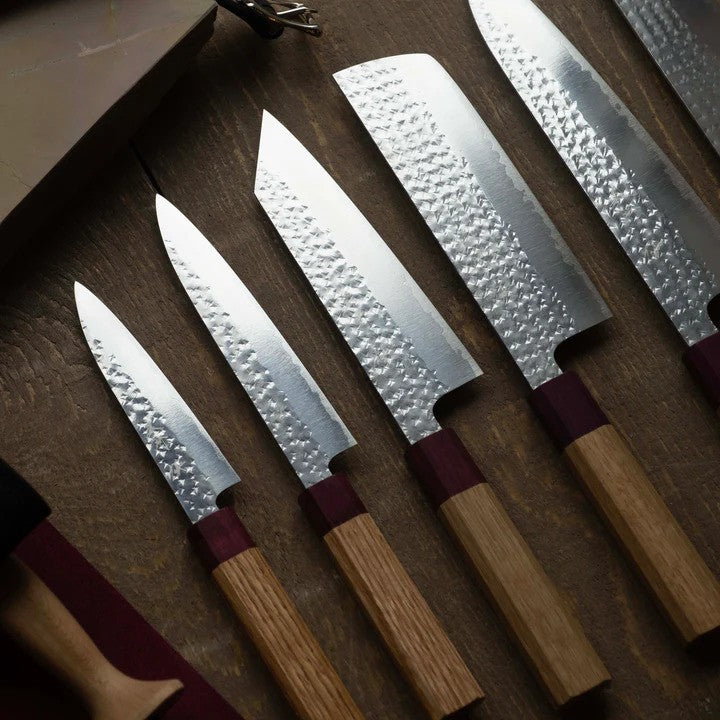
THE BLACKSMITH
YU KUROSAKI
- Choosing a selection results in a full page refresh.


















Usually ready in 1 hour
| Blade Length | 240 mm |
| Total Length | 405 mm |
| Steel | Aogami (Blue) Super |
| Handle | Stabilized Birch |
| Ferrule | White G10 Spacer |
| Rockwell | 63-65 |
| Height Spine to heel | 51 mm |
| Width at Spine | 2.03 mm |
| Weight | 212 grams |
| Bevel | Double (50/50) |
Yu Kurosaki
These are easily some of the most beautiful knives we have at the shop. Made by Master Blacksmith Yu Kurosaki who works out of a newly constructed shop just steps from the Takefu knife village community centre. He began his blacksmith journey in 2002 at Kanehiro and now only 17 short years later he has been awarded his Master Blacksmith designation by the Echizen Blacksmith Foundation. His knives represent the future of Blacksmithing in Japan as he focuses on traditional technique while using innovative and progressive design's and finishes that have garnered the attention of many chef's around the globe. Simply put his knives are stunning to look at and dare we say perform even better than they look.
Takefu Knife Village
The Takefu Knife Village is a cooperative workshop in the Echizen region of Japan. It is the home to a long list of blacksmiths that we work with and many young and upcoming apprentices learning the trade. The area has a 700 year long history of smithing with roots in agricultural tools turned cutlery powerhouse.
The Knife
This new "Kurosen" line (combination of "Kuro" meaning black, and the "Senko Ei" stainless series) from Yu Kurosaki utilizing the roll forge technique which cuts down the cost, but you still get the great steel (Aogami/Blue Super), thin grind, and fit and finish of the hand forged Shizuku line. These fall into the laser category and while are more delicate than some other knives have a buttery smooth cutting feel due to the thinness behind the edge from the high bevel grinds. These guys have a kurouchi (blacksmith) finish, stainless clad, and Aogami/Blue Super steel core -- making for an excellent "best of both worlds" knife!
The gyuto is an all purpose knife and the Japanese equivalent to the western chef's knife, and 240mm is the equivalent of the standard 9 inch variation of that knife. From slicing, dicing, chopping, and carving the gyuto can do it all, and this one in particular has a hybrid profile that has enough sweep to rock and a big enough flat spot on the heel to chop comfortable. The blue core steel is incredibly easy to sharpen to hair popping levels, and with the stainless cladding you get all that performance with minimal exposed carbon to worry about rusting on you!
Follow these care recommendations for your Japanese knives to protect the edge and keep them sharp as long as possible:
All products are shipped within 24 hours. We offer same day shipping for products ordered by 12pm. Please allow 4-7 business days for your shipment to arrive with standard shipping. Expedited shipping options are also available at checkout.
We offer free shipping on orders within Canada over $150 CAD and free shipping on orders to the US over $200 USD.
Curbside pick-up is available at both our Hamilton and Etobicoke locations.
To make sure our customers are always satisfied, we offer full refunds on products for 14 days after receiving them. See our full return policy for details.
More questions? Check out our shipping policy, our return policy, or reach out to us directly.

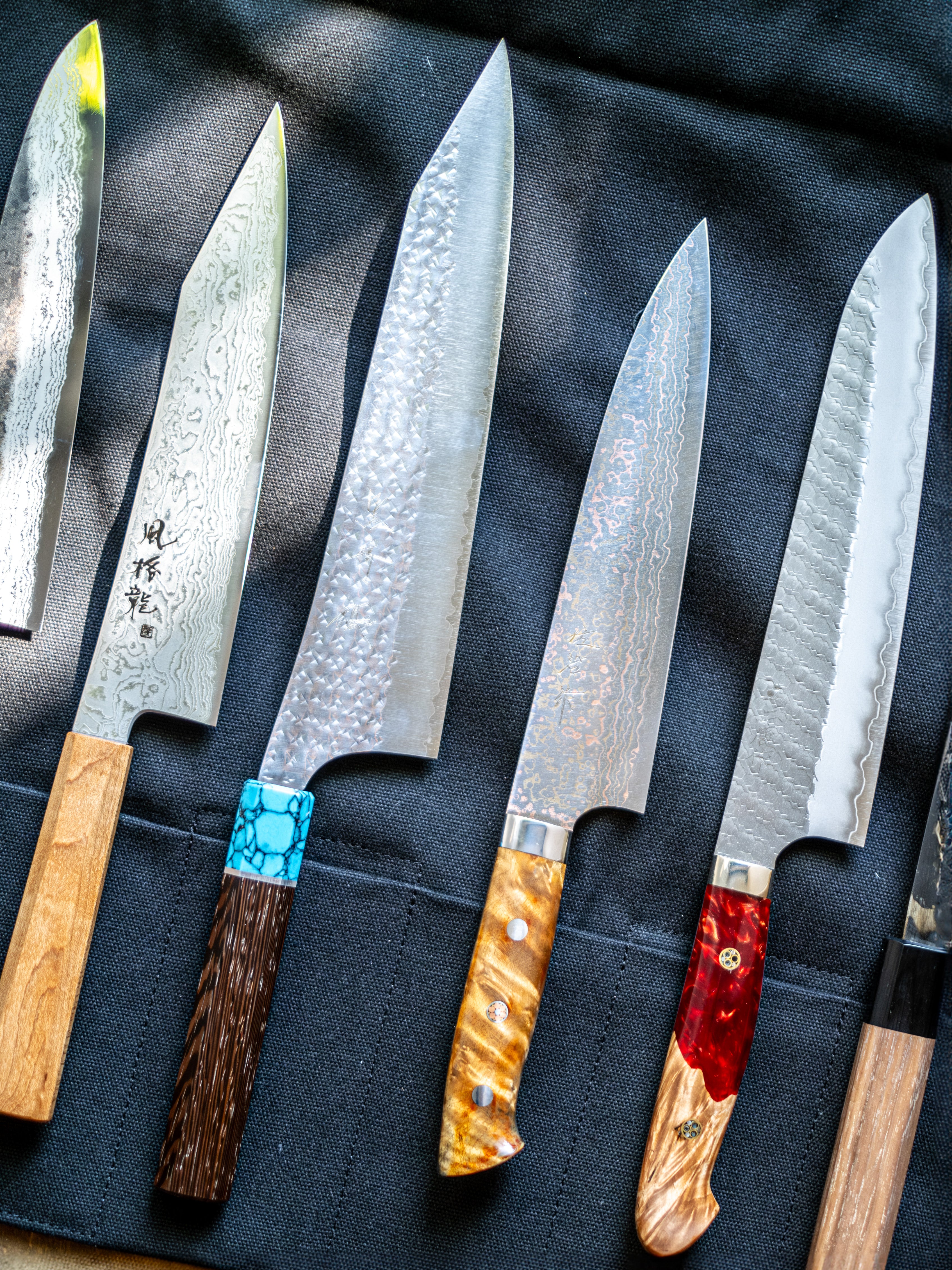
The Gyuto is the Japanese equivalent to the western style chef’s knife and is without question the most versatile knife shape. It ranges in size from 180 mm (7 inches) to 240 mm (10 inches), making it longer than the Santoku and Bunka. This length makes it adept at handling almost any task you'll come across in the kitchen, from mincing small ingredients to chopping through larger fruits and vegetables. The longer the knife, the more time it will take to grow accustomed to its length, but the more versatile it will be.
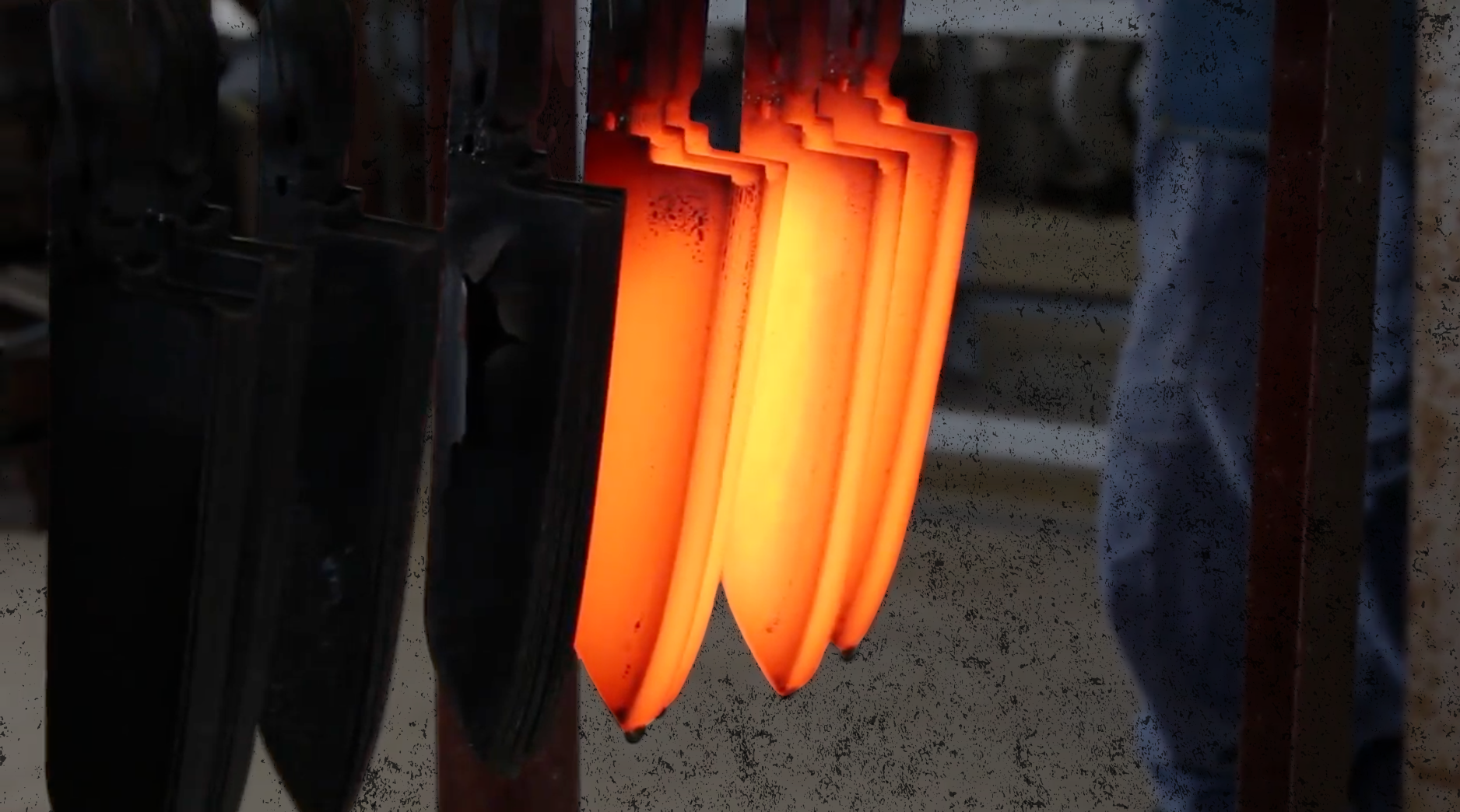
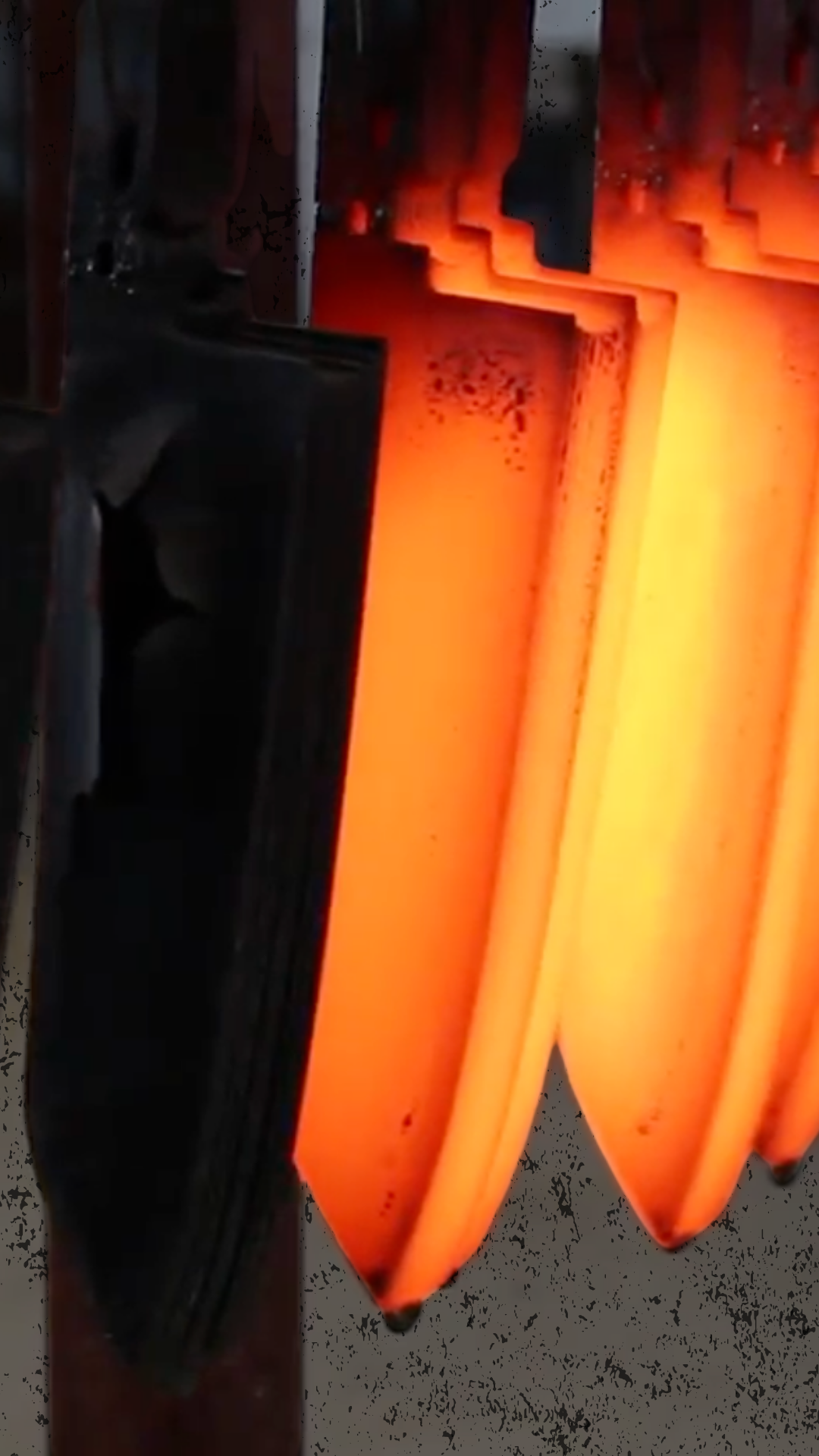
AKA Blue Super: This steel is considered by many to be the best carbon steel available for knife making. Containing elevated levels of carbon, chromium and tungsten and with the addition of molybdenum it is easy to sharpen, gets super sharp, is less reactive to rust, and is less brittle (compared to other carbon steels).
Chemical Composition:
C 1.4-1.5% | Cr 0.3-0.5% | W 2.0-2.5% | Mo 0.3-0.5% | V 0.5%
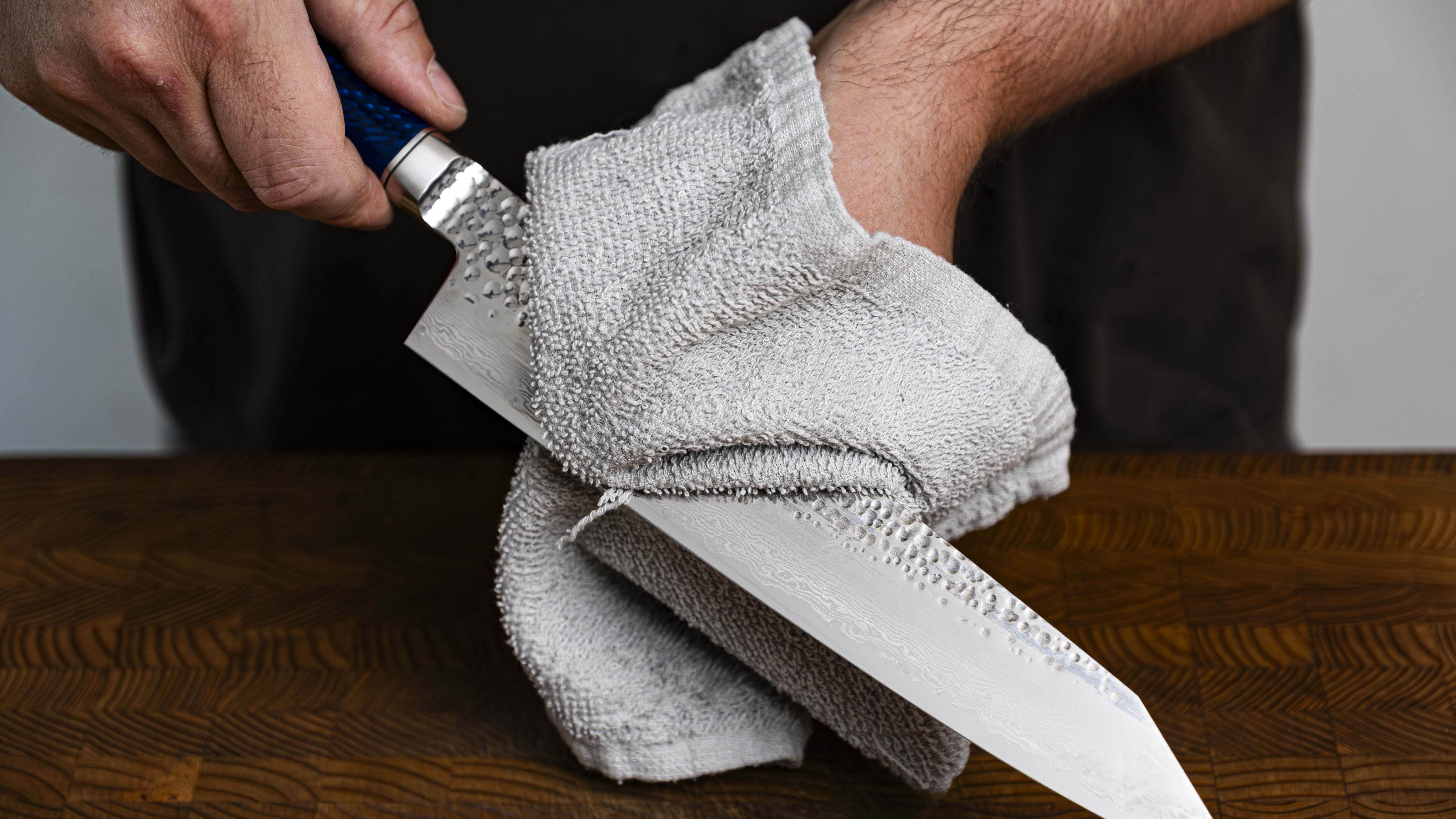

MODERATE MAINTENANCE
Stainless clad knives have two softer outer layers of stainless steel around a harder core layer of carbon steel. The clad line (wavy line near the cutting edge of the knife) is where the layers of stainless steel end. Past this point, the exposed carbon steel is susceptible to rust or discoloration. This edge will develop a patina (a darkening of the steel; blue, dark grey, sometimes black colouration of the blade) no matter how well they are cared for. Stainless clad knives are great for those who want the easy sharpening of a carbon steel coupled with the rust resistant properties of stainless steel.

Master Blacksmith Yu Kurosaki works out of a newly constructed shop just steps from the Takefu knife Village community centre in Echizen City, Fukui Prefecture, Japan. He began his blacksmith journey in 2002 at Kanehiro Hamono, apprenticing under master blacksmith Hiroshi Kato-san (Traditional Master Craftsman, or “Dentou-kougeishi”, with over 50 years experience). 17 years later, he became the youngest blacksmith to be awarded the same Traditional Master Craftsman honour bestowed upon his mentor. His knives represent the future of blacksmithing in Japan, as he focuses on traditional techniques while using innovative and progressive designs and finishes that have garnered the attention of many chefs around the globe. Simply put, his knives are stunning to look at and perform even better than they look.
